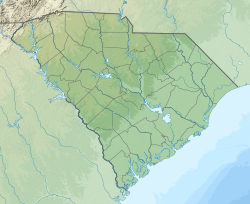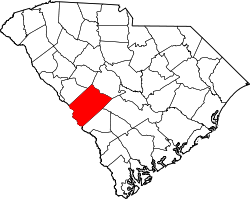Wagener | |
|---|---|
 | |
| Nickname: Gaigeville | |
| Coordinates: 33°39′14″N81°22′10″W / 33.65389°N 81.36944°W [1] | |
| Country | United States |
| State | South Carolina |
| County | Aiken |
| Named after | George Wagener |
| Area | |
• Total | 1.35 sq mi (3.49 km2) |
| • Land | 1.34 sq mi (3.47 km2) |
| • Water | 0.0077 sq mi (0.02 km2) |
| Elevation | 466 ft (142 m) |
| Population | |
• Total | 631 |
| • Density | 471/sq mi (181.8/km2) |
| Time zone | UTC-5 (Eastern (EST)) |
| • Summer (DST) | UTC-4 (EDT) |
| ZIP code | 29164 |
| Area codes | 803, 839 |
| FIPS code | 45-74050 [4] |
| GNIS feature ID | 2406814 [1] |
| Website | www |
Wagener is a town in Aiken County, South Carolina, United States. The population was 797 at the 2010 census, making it the largest settlement in the county north of the South Fork Edisto River. [5] It is part of the Augusta, Georgia metropolitan area. The town was also featured in the viral video for the Boots on the Ground (song).


